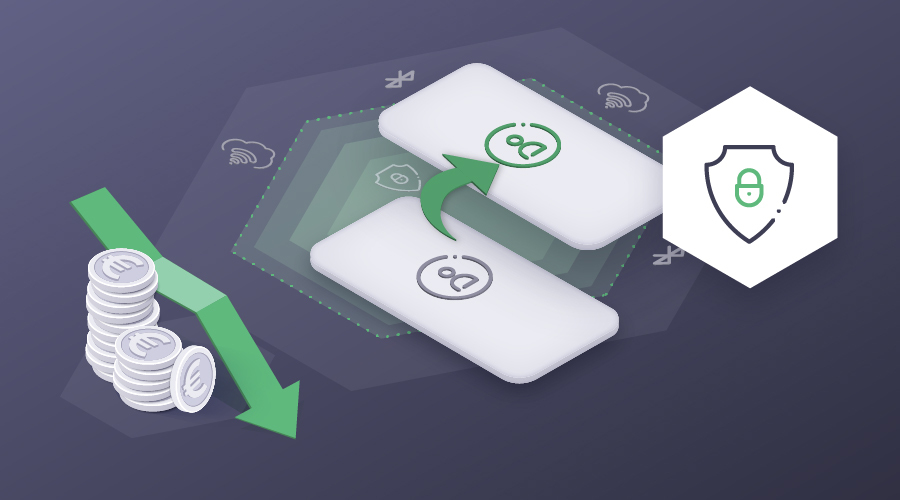With Adaptive Account Recovery, Futurae solves one of the biggest authentication pain points for businesses and users alike; switching to a new smartphone.

One of the most significant cost drivers in companies is when users switch to a new smartphone. By switching to a new smartphone, users lose access to their two-factor authentication token that remains in their old phone. The cost happens quite regularly, as statistics show that users change to a new phone on average every two years. Since the users usually no longer have the original onboarding letter at hand, they have to contact the help desk to start a new registration. The result is very high support costs for the company while users risk being excluded from online banking services for a few days.
Research shows that for financial service providers, 40% of help desk calls are related to issues of login problems, onboarding, or changing of devices. These calls can amount to more than hundred of thousands of dollars in cost of resources annually. According to Gartner, a five minute call to a helpdesk line costs on average 25 dollars. With 20,000 calls a year, this sums up to a hefty half a million dollars that a large financial service provider will have to cover. Such costs also affect medium-sized companies that will spend almost half of that amount purely to resolve login-related problems.
Enabling user growth with adaptive account recovery
With Adaptive Account Recovery, the 2FA token migration process from the old device to the new can be performed within seconds by the user themselves and without any additional support. The user sets up the new smartphone using a backup of his old device, and the system automatically detects whether the user is in a secure context and meets the defined risk parameter. If this is the case, the system migrates the 2FA token automatically. The user can immediately access his online services again without any friction. The seamless user experience has a great positive impact on customer loyalty and satisfaction, which accelerates growth, while at the same time reducing customer support costs.
What is behind Adaptive?
The term adaptive is not new. It is used everywhere where an organism, system, or application adapts to a situation. Examples include the cruise control in a car, which adapts to the speed of the vehicle in front, or our body’s own immune system, which uses different defense substances to destroy various invading pathogens.
Especially in the authentication context, Adaptive techniques, which are largely based on machine learning, are becoming a game changer. Historically, security and usability have always been in conflict, as certain security processes cannot be automated - at least until today. The new type of risk-based authentication uses algorithms that learn the user context over time to build an accurate profile of a given user’s login patterns. The algorithms can track devices, typical user login times or common work locations, detect anomalies, and more. Read more about the technology and how it is applied here.
Next level authentication: Advantages of Adaptive
At Futurae, Adaptive Authentication stands for a new generation of features around secure authentication.
Adaptive authentication not only increases security, but also reduces friction for users trying to get work done. Today’s login requirements can be annoying, users must always enter a username, password, and type or scan a code from an app. Adaptive authentication can ask for less information from users who are recognized and are in contexts that are expected. It only occasionally asks for more information when circumstances suggest a higher security risk. Overall, the result is fewer interruptions for users, lower barriers to entry, and increased security.
Want to learn more? Reach out to our experts at sales@futurae.com